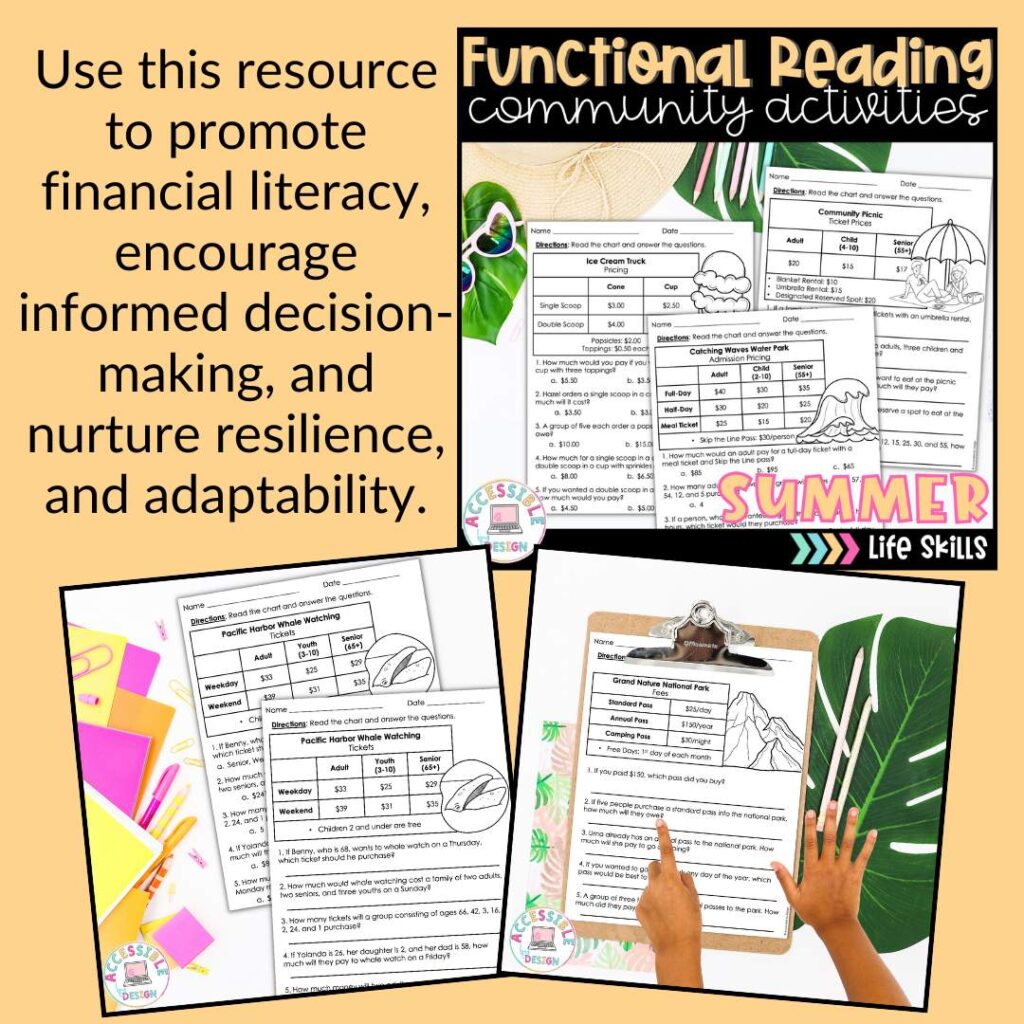Why Functional Reading Price Charts Benefit Students with Disabilities
As special education teachers we’re always on the lookout for real-world applications that connect to community participation for students with disabilities. One way that’s been quite successful in my classes is using functional reading of price charts that are tied to community events.
For example, hearing the sound of the ice cream truck and deciding what to buy with a budget of $4. Or getting ready to go to the waterpark with enough money for a ticket, lunch, and maybe a souvenir. These are just some of the situational activities for price charts for community events that can help prepare students with disabilities.
When students practice reading price charts, they will be more ready to go into the community and confidently read and understand price charts. It can enhance their financial literacy as well as their decision-making abilities, as part of a journey to independent living.

Benefits of Functional Reading Price Charts
There are many benefits to students reading price charts including an increase in successful community participation and independent living skills. There are also very particular skills students will gain through functional reading price charts that are part of real-world applications.
Developing Critical Analytical Skills
Reading price charts requires students with disabilities to develop critical analytical skills. They learn to process visual representations of data by interpreting it using their knowledge to make an informed decision.
Encouraging Financial Independence
When students practice reading price charts like these functional reading activities geared to summer events, they make more informed decisions about spending their money. With 15 different summer community events with ticket charts, students can identify appropriate ticket purchases for events and calculate costs. Plus, these functional reading activities are differentiated for students with multiple choice or open response options.

Enhancing Mathematical Proficiency
Through practical application, students can understand mathematical principles in a real-world context. This not only fosters a deeper understanding of the subject but an appreciation for the real-world relevance of such activities.
Promoting Financial Literacy
Financial literacy is essential learning for all individuals! Student with disabilities can benefit from repeated practice with functional reading activities that support financial literacy. Students with disabilities who practice reading price charts develop a strong foundation in financial literacy skills such as budgeting and managing their own spending.
Encouraging Entrepreneurial Thinking
Understanding price charts can spark entrepreneurial thinking among students with disabilities. This means that students can take initiative and adapt to change with added ease. Plus, they can find creative solutions that channel their well-practiced financial literacy skills!

Final Takeaway
Practicing how to read price charts provides invaluable benefits to students with disabilities. These are skills we can reinforce in our classrooms! This will enable them to develop critical analytical skills, enhance financial independence, and foster mathematical proficiency. Plus, these functional reading activities promote financial literacy, encourage informed decision-making, and nurture entrepreneurial thinking, resilience, and adaptability. All of these are essential traits for successfully navigating life outside of the classroom and after high school.

You can make this happen in your classroom with this set of functional reading activities focused on price charts for community events that are popular in the summer but useful all year long too! Tackle tangible, real-life math skills with easy-to-implement worksheets. These encourage repetitive practice in different formats and feature topics that are engaging for students!
By equipping students with disabilities with the ability to read price charts, we empower them to confidently engage with financial information and achieve greater financial well-being.







One Comment
Comments are closed.